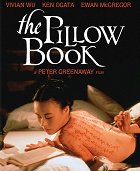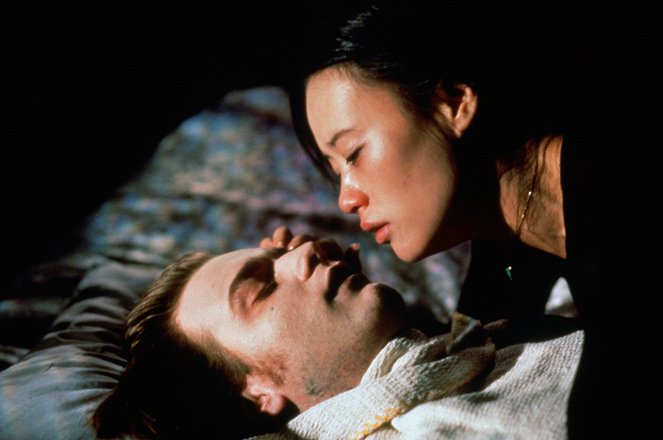Ohjaus:
Peter GreenawayKäsikirjoitus:
Peter GreenawayKuvaus:
Sacha ViernyNäyttelijät:
Vivian Wu, Ken Ogata, Ewan McGregor, Ken Mitsuishi, Chris Bearne, Mennan Yapo, Ronald Guttman, Adrian Kwan, Jim Adhi Limas, Ham-Chau Luong (lisää)Suoratoistopalvelut (1)
Juonikuvaukset(1)
An arresting Japanese model seeks to indulge her fantasy of having calligraphy inked on her body, a whim based partly on her father's habit of painting poetry on her face when she was a girl and partly on readings from the 10th-century erotica tome "The Pillow Book." But the tables are turned when she meets a bisexual English translator who wants to be her canvas instead. (jakelijan virallinen teksti)
(lisää)Videot (1)
Arvostelut (1)
"Peter Greenaway's fascinating film The Pillow Book opens with heroine Nagiko's birthday ritual. We see her father gently painting a birthday greeting on her face. These images indicate how influential Lacan's ideas about our initiation into language, the symbolic and the law of the father have become. Lacanian notions of subjectivity and textuality are further invoked when Nagiko sees her own written-upon reflection in a mirror..." (An Introduction to Critical Social Psychology, Alexa Hepburn, p. 87). One interpretation understands Greenaway's work as highly post-structuralist, The Pillow Book is completely so, both in form and content. Greenaway's cinematic exploration of language here goes so far as to grasp language as a sovereign sphere of desire and pleasure, inseparably intertwined with bodily pleasure, always captured in language. This sovereign power of language is materialized by the use of writing, in which not only the materiality of language and the reality of its effects are prominently manifested, but also through the use of Japanese characters (mysteriously beautiful and "delightful" to a European, the mystery of this signifier's essential inscrutability, through which we are compelled to seek fulfillment of our desire. /// Greenaway additionally dissolved this power of the sign into the entire film by using that unique overlay of shots and images, which connect image and writing through a continuous series of overlaps, just as the characters connect their bodies with the signs. /// Of course, the film is not perfectly Lacanian or Barthesian, but no reader of their works should miss reading this film.
()


